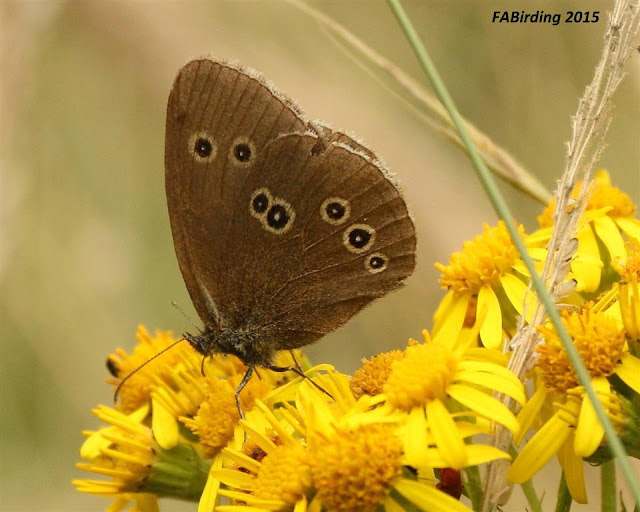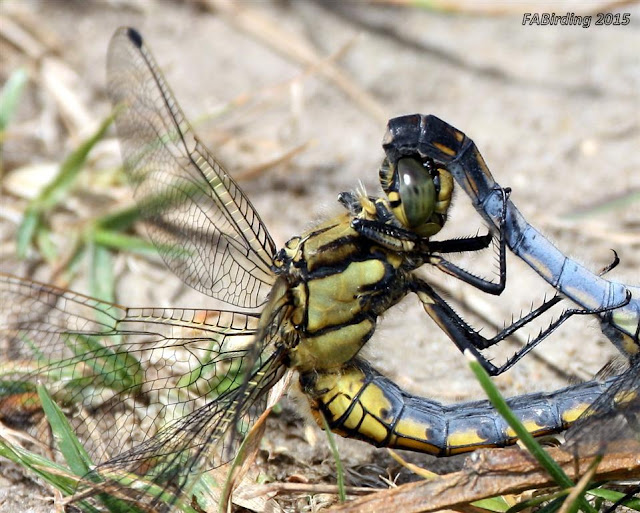My week started on Monday with a wander around the chalk hillside above Juniper Bottom in fairly windy conditions where hundreds of Marble Whites (Melanargia galathea) were flitting hither and thither.

On Tuesday I attended a Butterfly Conservation field trip to Sheepleas; comprising a mosaic of ancient and recent woodland, scrub and open grassland; lying on the chalk slopes of the North Downs.
A nettle rich field produced good views of many species including Small Tortoiseshell (Aglais urticae). It was interesting to note that many individuals looked a lot smaller than normal.
A sunny glade in the woodland produced our best sightings of Silver-washed Fritillary (Argynnis paphia) with several males perched on umbillifers ...
... followed by a slightly more distant view of a mating pair, with the much darker coloured female above the male.
During this walk I logged 13 species including, after a long wait due to very gusty winds and intermittent showers, a high tree top view of a Purple Emperor.
On Thursday morning I made a brief check of the wildlife around the ponds on my local birding patch at Epsom Common and managed to get my first record shot of a Downy Emerald (Cordulia aenea) perched in the shaded vegetation above the water.
On my way back to the car park to join another Butterfly Conservation walk I recorded my first sighting of a Purple Emperor at this site
(see my previous post "A Purple Day"), initially perched with its wings closed on a post before moving onto the ground to seek out some nutrients.
Purple Emperor (Apatura iris).
After everyone spent time enjoying the close views of the Purple Emperor we had a very pleasant two hour stroll around Epsom Common led by Alison Gilry, another transect recorder, enabling me to add Marbled White and Purple Hairstreak to my patch list sightings for this year.
Holly Blue (Celastrina argiolus)
 |
| Purple Hairstreak |
After a lunch break three other butterfly enthusiasts joined me on my weekly transect walk on nearby Ashtead Common.
Having those extra pairs of eyes and experience certainly helped with identification including an unexpected further sighting of two male Purple Emperor and a Purple Hairstreak (Neozephyrus quercus) both too far away for the lens so I have inserted a shot of the latter species taken last year.
Once again the transect produced sightings of eleven species; Small Skipper (4), Small/Essex Skipper (3), Large Skipper (3), Large White (1), Purple Hairstreak (2), White Admiral (3), Purple Emperor (2), Comma (2), Silver-washed Fritillary (1), Speckled Wood (2), Marbled White (1), Gatekeeper (5), Meadow Brown (41) and the most numerous was Ringlet (53). FAB.
Ringlet (Aphantopus hyperantus).
Linking to:


























































